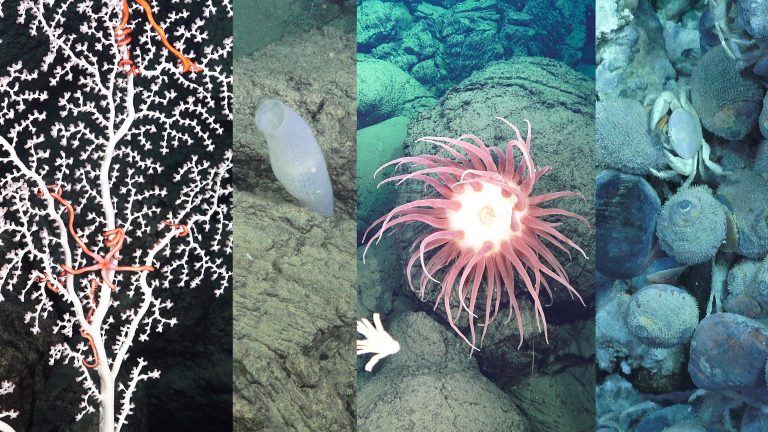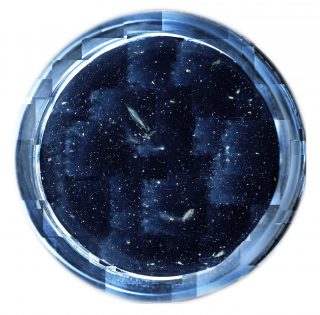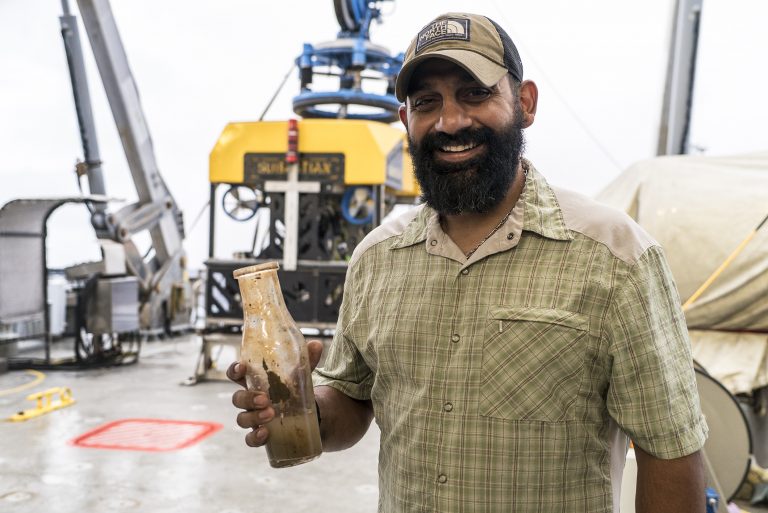It is a surprisingly difficult talk to edit through the imagery produced by Remotely Operated Vehicle SuBastian. The dives on the hydrothermal systems of the Mata Volcanic Group have been exciting: both visually and contextually stunning. The landscape is so unfamiliar – so pristine and spectacular – that viewers might find themselves lacking any reference or connection to these locations.
At times, it is useful to remember these systems exist here on planet Earth. It is tempting to conceive them as extraterrestrial destinations, far away from any human interference. Yet, it turns out we are much closer to them than we could possibly imagine. In fact, traces of humanity are quite present in the deep abyss.

Plain to See
Often when something is extremely abundant and found everywhere, it may fade from our attention and become “invisible” or mundane. It becomes such a common part of the landscape that it seems to be natural. Turn your head, and for a few seconds, count all the plastic you can spot.
Plastics are an ubiquitous part of our human experience. Nearly everyone, everywhere, every day, comes in contact with plastics, most of it disposable. Yet ninety-one percent of it is not recycled. The use of Plastics has increased twenty-fold in the past half-century, and its use is expected to double in the next twenty years. In short, there is a lot of plastic on our planet – and we keep producing more every minute.
During this expedition, during the shakedown dive of remotely operated vehicle ROV SuBastian, the team engaged in an unexpected task. At 1,900 meters below the surface of the ocean, the ROV’s manipulator arms began picking up plastic litter. Today, plastic is the most prevalent type of marine debris found in our ocean and the Great Lakes.

Disappearing Act
Plastic never biodegrades and bacteria cannot decompose it, but, UV rays do break it into smaller pieces that can make them seem invisible.

No environment on Earth has escaped plastic pollution, not even places as remote as ice cores from the polar regions. Yet, in spite of its negative impacts and remarkable travelling abilities, we do not know where all of our plastic trash is going. There is a considerable proportion of manufactured plastics that is unaccounted for in surveys tracking their fate. Even the discovery of widespread microplastics in oceanic gyres does not explain the missing fraction. Put simply, we do not know where all the plastic we are producing is going. Those tracking this alarming fact are turning to the deep ocean as a possible answer. Could all of that plastic endiup there?
A multinational study conducted in 2014 found that ‘microplastics, in the form of fibers, was up to four orders of magnitude more abundant (per unit volume) in deep-sea sediments from the Atlantic Ocean, Mediterranean Sea and Indian Ocean than in contaminated sea-surface waters.’ The study suggests that deep-sea sediments are a likely sink for microplastics. Back in January, during Falkor’s Sea to Space expedition, filters deployed to collect marine snow came back with an appalling amount of plastic fibers.
And again on this expedition, the science team and crew have encountered a persisting form of pollution. At 2,534 meters of depth, SuBastian was working to clean up this human-generated problem. Thus far, the team encountered several bottles and cans on the seafloor.
Breaking it Down
Plastic never goes away. Indestructibility is a wonderful trait when you drop a bottle of ketchup on a white carpet, but not as friendly when our convenient plastic bottles, straws, containers, bags, toothpicks, synthetic fabrics, etc., reach the end of their (usually) very short life.
Climate change and plastic pollution are parallel global emergencies. Plastic comes from petroleum. In order to truly decrease our usage of fossil fuels, we need to reduce our plastic consumption. Moreover, we need to learn where all of our plastic waste is going, what effects it is causing and, most importantly, how we can effectively deal with it.
It can seem completely overwhelming, but humans do have the ability to solve the challenge of plastic debris in the ocean. It starts by breaking it down into digestible pieces, and taking the first step.


